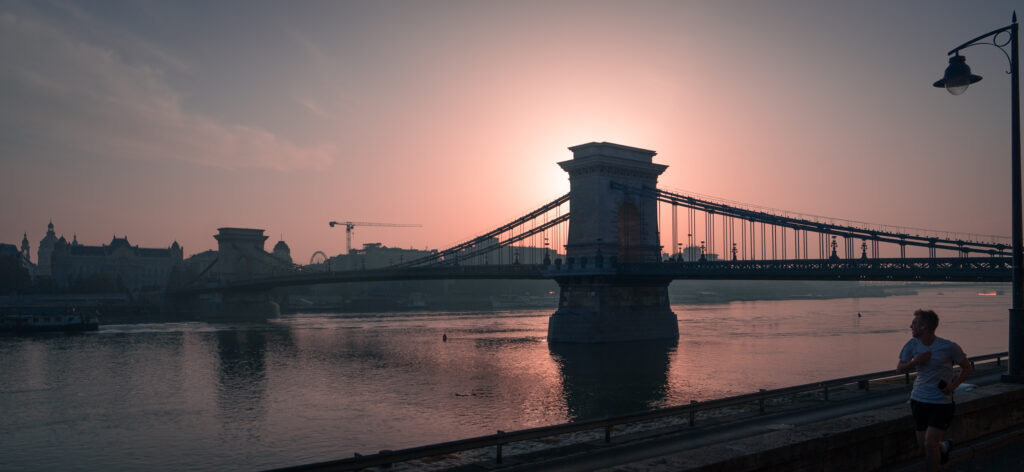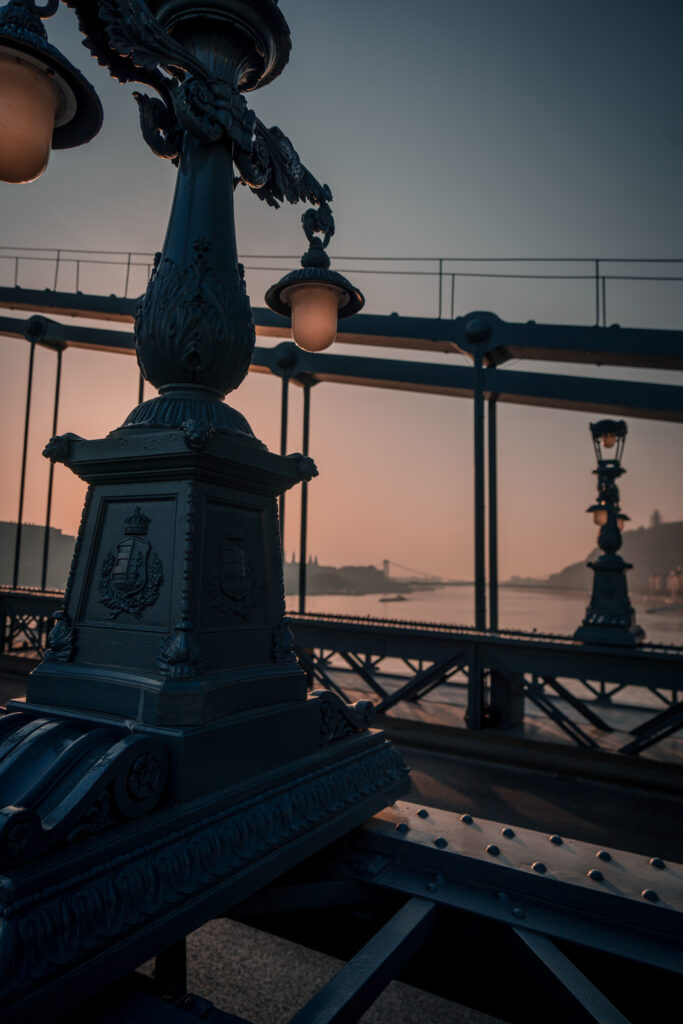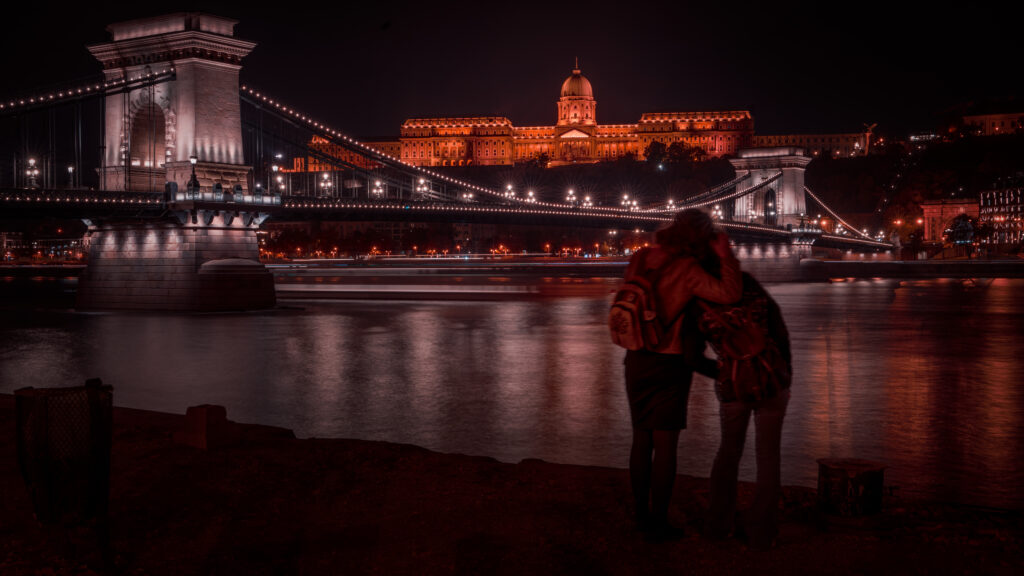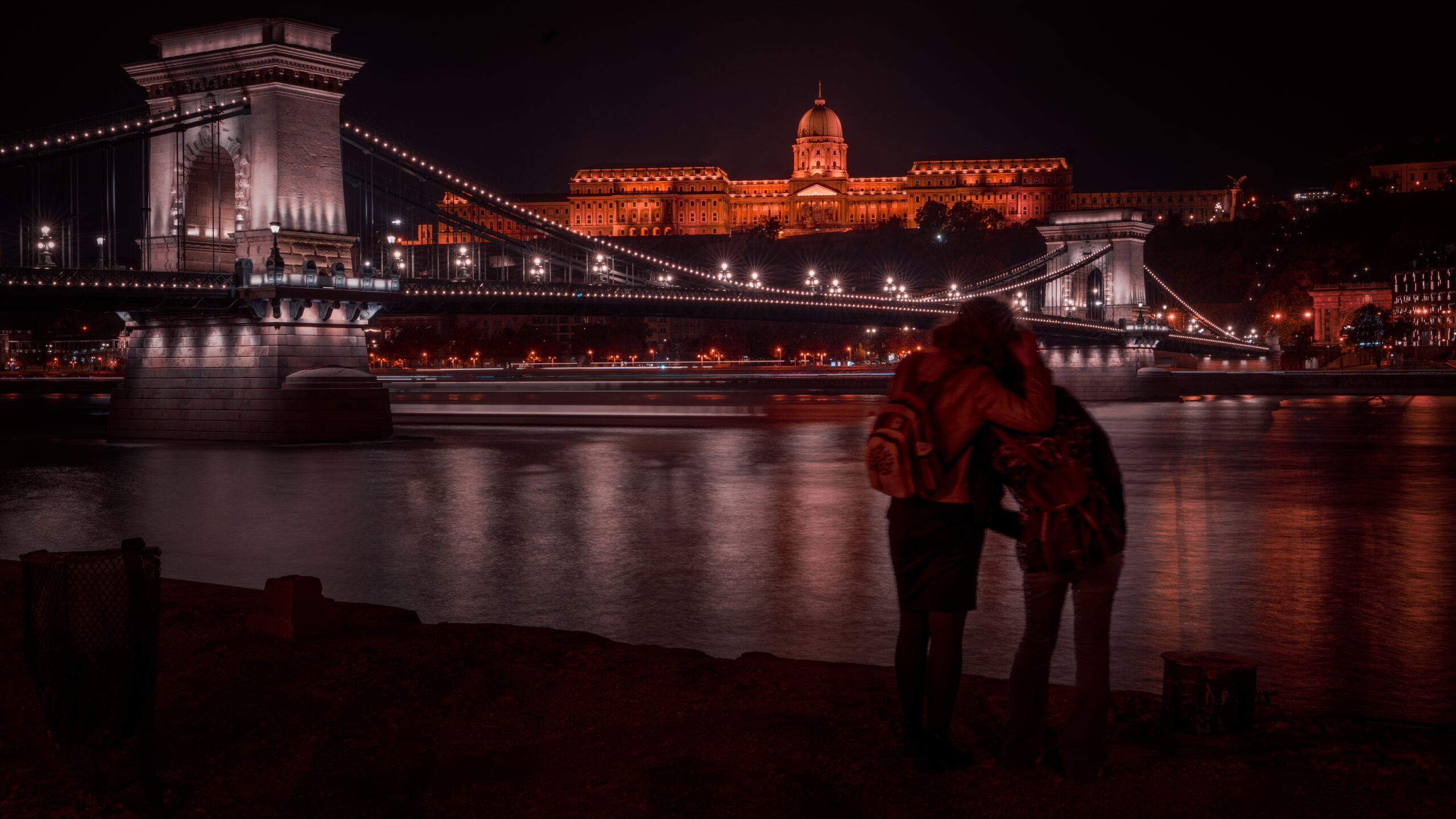When it comes to iconic landmarks in Budapest, few places are as recognizable as the Széchenyi Chain Bridge. Spanning the Danube River and connecting the Buda and Pest sides of the city, the Chain Bridge is not just a vital transportation link but also a stunning architectural masterpiece that has become a symbol of Budapest’s history and resilience.

As a photographer, the Chain Bridge presents a wealth of opportunities to capture stunning images, whether you’re shooting it during the day, at sunset, or glowing in the city’s night lights. In this guide, I’ll share my personal experience photographing the Chain Bridge, along with tips, techniques, and the best times and places to shoot this iconic structure. Whether you’re a seasoned photographer or a beginner with a smartphone, this post will help you make the most of your time capturing one of Budapest’s most photogenic sights.

Why the Chain Bridge is a Must-Shoot Location in Budapest
The Széchenyi Chain Bridge is more than just a picturesque landmark; it’s a vital part of Budapest’s history and culture. Completed in 1849, it was the first permanent bridge to span the Danube in Hungary, symbolizing the connection between the two halves of the city—Buda and Pest.

The bridge’s grandeur is undeniable, with its stone towers, massive iron chains, and iconic lion statues guarding each end. It’s a perfect subject for photography because:
- Architectural Beauty: The bridge’s symmetrical design and intricate details make it a stunning subject from any angle.
- Historical Significance: Its history adds depth to your photos, giving them context and a story.
- Day-to-Night Transformation: The Chain Bridge takes on different personalities depending on the time of day, from golden-hour glows to night-time illuminations.
- Dynamic Composition Opportunities: Whether you’re capturing the bridge itself or using it as part of a wider cityscape, the possibilities are endless.

The Best Times to Photograph the Chain Bridge
The timing of your photos can make or break your shots, and the Chain Bridge is no exception. Depending on when you visit, you can capture vastly different moods and atmospheres.

1. Golden Hour
Golden hour is that magical time just after sunrise and before sunset when the light is soft and warm. This is one of the best times to photograph the Chain Bridge, as the low sun casts a beautiful golden hue over the bridge and the surrounding city. The light during this period is diffused, making it ideal for highlighting the architectural details of the bridge without harsh shadows.
Morning Golden Hour: In the early morning, the city is quiet, and you’ll have the bridge almost entirely to yourself. The rising sun will illuminate the bridge from the east, casting a soft glow over the Pest side. This is a great time to capture wide shots of the bridge with the Buda Castle in the background.
Evening Golden Hour: In the evening, the sun sets behind the Buda side, casting warm, golden light across the river. You’ll get beautiful reflections in the water and soft light illuminating the towers and chains of the bridge.
Pro Tip: Use a wide-angle lens to capture the entire bridge during golden hour. The warm light will enhance the stone and ironwork, and a lower ISO (100-200) will help keep your images crisp and free of noise.

2. Blue Hour
Blue hour—the period just after sunset or before sunrise, when the sky takes on a deep blue tone—is another prime time to photograph the Chain Bridge. As the city lights start to come on, the bridge begins to glow, providing a beautiful contrast with the rich blue of the sky.
Why Blue Hour Works: The combination of natural and artificial light creates a balanced exposure, and the deep blue of the sky contrasts beautifully with the warm yellow lights that illuminate the bridge. This is the perfect time to capture both the bridge and the cityscape without the sky becoming completely dark.
Pro Tip: Use a tripod and a longer shutter speed (around 10-15 seconds) during blue hour. This will allow you to capture the subtle light in the sky, while the illuminated bridge will appear sharp and vibrant.
3. Night Photography
At night, the Chain Bridge truly comes alive. The bridge is illuminated by a series of spotlights that highlight its structure, casting reflections on the Danube River below. The surrounding cityscape—lit up with the lights of Buda Castle, St. Stephen’s Basilica, and the Hungarian Parliament Building—provides a breathtaking backdrop for night photography.
Best Locations for Night Shots: I’ve found that photographing the bridge at night from either side of the Danube offers stunning results. From the Buda side, you can capture the Chain Bridge with the Parliament Building lit up in the background, creating a dynamic and iconic shot. On the Pest side, you’ll get a fantastic view of the bridge with Buda Castle glowing in the distance.
Pro Tip: Night photography requires a steady hand or a tripod to avoid blur. Use a long exposure (10-30 seconds) to capture the glowing lights of the bridge and the reflections in the water. Be mindful of the ISO; keep it low (ISO 100-400) to avoid grainy images.
Top Locations for Photographing the Chain Bridge
To capture the Széchenyi Chain Bridge at its best, you need to explore different viewpoints around the city. Each angle offers a unique perspective, allowing you to showcase the bridge in various ways.

1. From the Buda Side
The Buda side of the river offers some of the most striking views of the Chain Bridge, with the backdrop of the Pest skyline adding depth and interest to your photos.
- Fisherman’s Bastion: This is one of the best elevated vantage points to photograph the Chain Bridge. From here, you can capture the bridge along with the Hungarian Parliament Building in the background, framed by the neo-Gothic arches of Fisherman’s Bastion. The view is especially stunning during the golden and blue hours.
- Clark Ádám Square: Located right at the foot of the Buda Castle, this is a fantastic spot to capture the bridge up close. From here, you can photograph the stone lions and the intricate iron chains while including parts of the city in the background.
- Buda Castle Grounds: If you walk around the perimeter of Buda Castle, you’ll find various vantage points to photograph the bridge from above. The view from Savoy Terrace offers a panoramic shot of the Chain Bridge with the city lights reflecting off the river.
Pro Tip: When shooting from Fisherman’s Bastion or Buda Castle, consider using a telephoto lens (70-200mm) to compress the distance between the bridge and the background. This will bring the bridge and the cityscape closer together, creating a more dramatic shot.

2. From the Pest Side
The Pest side offers sweeping views of the Chain Bridge with Buda Castle in the background. This is a great spot for capturing the bridge from a lower perspective.
- Danube Promenade: This riverside walkway provides unobstructed views of the Chain Bridge. During sunset or at night, you can photograph the bridge with the Buda Castle lit up behind it. The Promenade also allows you to play with reflections in the water for a more dynamic image.
- Eötvös Square: Located near the Four Seasons Hotel Gresham Palace, this square offers a perfect head-on view of the bridge. You can capture the entire structure from one end to the other, with Castle Hill providing a beautiful backdrop.
- Shoes on the Danube Memorial: A little further down the Promenade, this poignant memorial offers a different perspective. You can incorporate the memorial into your shot for a more meaningful composition, with the Chain Bridge and Buda Castle in the distance.
Pro Tip: From the Pest side, consider using a neutral density (ND) filter to extend your exposure time during the day. This can help create a smooth, flowing effect on the water, adding a peaceful and ethereal quality to your images.
Technical Tips for Photographing the Chain Bridge
1. Use a Tripod
Night photography and long exposures are essential for capturing the Chain Bridge, so a tripod is your best friend. Whether you’re photographing the bridge lit up at night or trying to capture light trails from passing cars, a tripod will keep your camera steady and your shots sharp.
2. Experiment with Shutter Speeds
Long exposures (10-30 seconds) are ideal for night photography, especially if you want to capture the motion of cars and boats passing over the bridge. During the day, a faster shutter speed will help freeze the action of pedestrians and vehicles on the bridge, giving your images a sense of energy and movement.
3. Play with Light Trails
The Chain Bridge is a fantastic location for capturing light trails. Position yourself near the entrance of the bridge and set your camera to a long exposure as cars pass by. The resulting light trails add dynamism to your image, while the illuminated bridge remains sharp and steady in the background.
4. Shoot in Manual Mode
For the best control over your exposure, shoot in manual mode. This allows you to adjust your ISO, aperture, and shutter speed based on the lighting conditions. In low light, use a low ISO (100-400)
Night Photography in Budapest: How to Capture the City After Dark
There’s something magical about photographing a city after dark, and few places come alive at night quite like Budapest. Known as the “Pearl of the Danube,” Budapest’s historic landmarks, illuminated bridges, and reflections shimmering on the water make it a playground for photographers, especially once the sun sets. Whether you’re a professional photographer with a full camera kit or a traveler with just a smartphone, the city’s captivating nightlife offers endless opportunities to create stunning images.
In this personal guide, I’ll walk you through the ins and outs of night photography in Budapest, from the best locations to technical tips, as well as some of my personal experiences photographing the city after dark. So grab your camera, pack a tripod, and get ready to explore the most photogenic spots in Budapest once the sun goes down.
